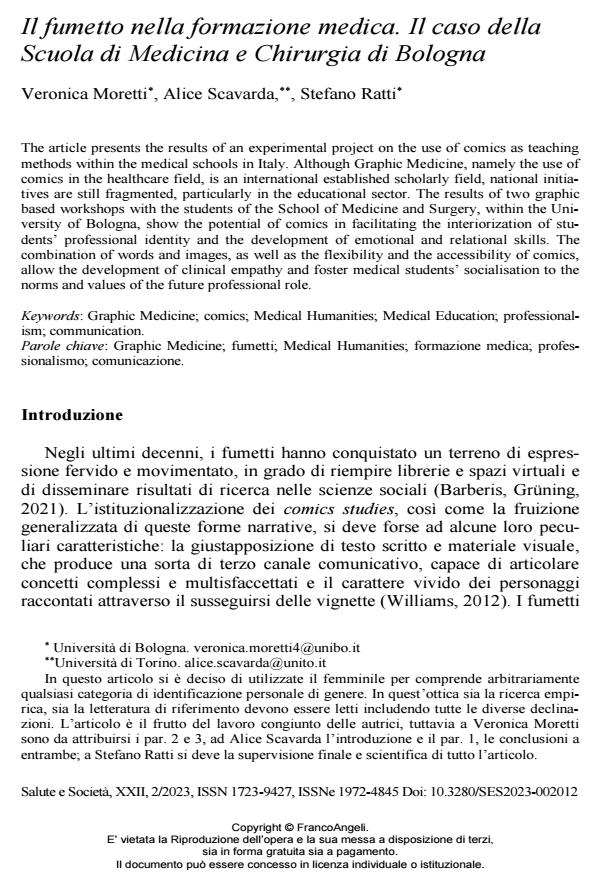Il fumetto nella formazione medica. Il caso della Scuola di Medicina e Chirurgia di Bologna
Journal title SALUTE E SOCIETÀ
Author/s Veronica Moretti, Alice Scavarda, Stefano Ratti
Publishing Year 2023 Issue 2023/2
Language Italian Pages 11 P. 129-139 File size 470 KB
DOI 10.3280/SES2023-002012
DOI is like a bar code for intellectual property: to have more infomation
click here
Below, you can see the article first page
If you want to buy this article in PDF format, you can do it, following the instructions to buy download credits

FrancoAngeli is member of Publishers International Linking Association, Inc (PILA), a not-for-profit association which run the CrossRef service enabling links to and from online scholarly content.
The article presents the results of an experimental project on the use of comics as teaching methods within the medical schools in Italy. Although Graphic Medicine, namely the use of comics in the healthcare field, is an international established scholarly field, national initiatives are still fragmented, particularly in the educational sector. The results of two graphic based workshops with the students of the School of Medicine and Surgery, within the University of Bologna, show the potential of comics in facilitating the interiorization of students’ profes-sional identity and the development of emotional and relational skills. The combination of words and images, as well as the flexibility and the accessibility of comics, allow the devel-opment of clinical empathy and foster medical students’ socialisation to the norms and values of the future professional role.
Keywords: Graphic Medicine; comics; Medical Humanities; Medical Education; professional-ism; communication.
- From comics to care: exploring the education potential of graphic novel in organ transplantation journey Veronica Moretti, Enrica Baraldi, Patrizia Burra, Stefano Ratti, in Medical Humanities /2025 pp.medhum-2025-013277
DOI: 10.1136/medhum-2025-013277
Veronica Moretti, Alice Scavarda, Stefano Ratti, Il fumetto nella formazione medica. Il caso della Scuola di Medicina e Chirurgia di Bologna in "SALUTE E SOCIETÀ" 2/2023, pp 129-139, DOI: 10.3280/SES2023-002012